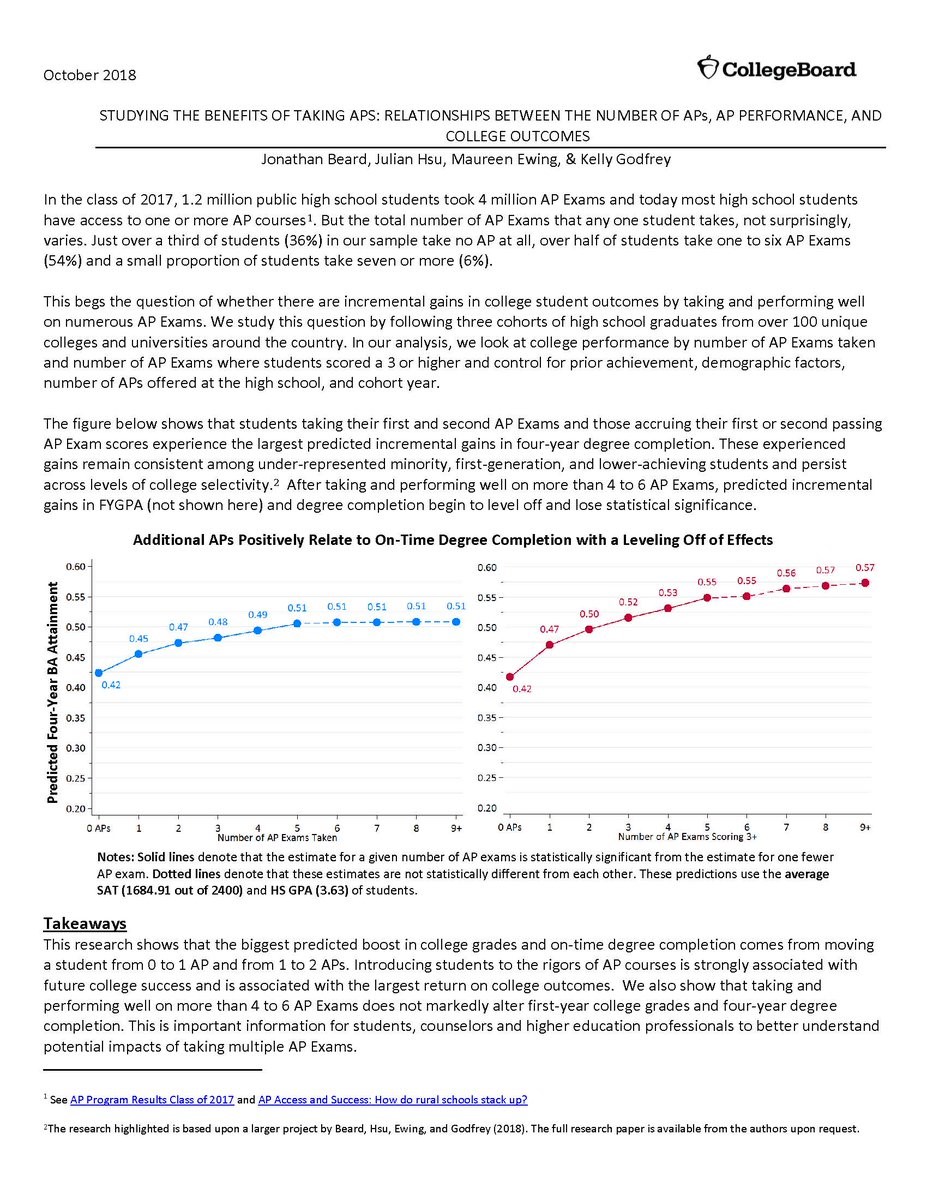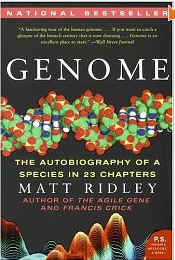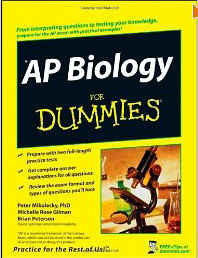|
|
|
AP
BIOLOGY FAQ's
|
|
 WHAT IS AP BIOLOGY? WHAT IS AP BIOLOGY?
 2020 Course description
2020 Course description
 Why should I take
AP BIOLOGY? Why should I take
AP BIOLOGY?
 Too many AP's?
Too many AP's?
 What
are the prerequisites for AP BIOLOGY? What
are the prerequisites for AP BIOLOGY?
 What books
will we use?
What books
will we use?
 Will
we do labs? Will
we do labs?
 What are the
4 BIG IDEAS of AP
BIOLOGY? What are the
4 BIG IDEAS of AP
BIOLOGY?
What are the 7 student
practices of AP BIOLOGY?
 How
much homework can I expect? How
much homework can I expect?
 What
if I am taking multiple AP classes? What
if I am taking multiple AP classes?
 WHAT
is the AP EXAM like? WHAT
is the AP EXAM like?
 When
is the AP Bio Exam? When
is the AP Bio Exam?
 2018 AP
EXAM SCHEDULE 2018 AP
EXAM SCHEDULE
What kind of calculator can I use on the AP Bio Exam?
 Will
the college I attend accept my AP credit? Will
the college I attend accept my AP credit?
 How do most students score on the AP exam? How do most students score on the AP exam?
 How
do BHS test scores compare to National average? How
do BHS test scores compare to National average?
 What
do the scores mean? What
do the scores mean?
 Advice from former AP BIO students
Advice from former AP BIO students
|
|
WHAT IS AP BIOLOGY?
The AP
Biology
course is
a fast
paced, challenging, and fun year long biology course
designed to be the
equivalent of a two-semester college introductory course usually taken by
biology majors their first year. Success in this course will depend on
your study skills, reading and writing abilities, motivation and maturity. AP
BIOLOGY differs significantly from the usual first high school course in biology
with respect to the kind of textbook used, range and depth of topics covered,
laboratory work done by students, and time and effort required of the students.
The textbook used for AP Biology is one used by many college biology majors. The
labs done by AP students must be the equivalent of those done by college
students.
2012 Report to the Nation
The course
will culminate in the taking of the Advanced Placement Biology Examination.
After showing themselves to be qualified on the AP Examination, some students,
as college freshmen, are permitted to undertake upper-level courses in biology
or to register for courses for which biology is a prerequisite. Other students
may have fulfilled a basic requirement for a laboratory-science course and will
be able to undertake other courses to pursue their majors. Many colleges give
credit for introductory biology to applicants with a score of 3 if they are
non-science majors, but few will accept a score of 3 for credit or advanced
placement if the student is a science major.
Many colleges DO NOT accept AP Biology Exam scores for credit
for Biology majors.
In 2019-20 there will be MAJOR REVISIONS in the scope and focus
of the AP
Biology curriculum AND THE DESIGN and GRADING of the AP BIO EXAM.
OVERVIEW OF COURSE REVISIONS
for 2019-2020 school year
APPROVED AP BIO AUDIT 2012
Kelly Riedell Brookings High School

The
Value of Taking AP Biology
·For personal satisfaction
·Because you love biology
·To compare yourself with
other students across the nation
·Because colleges look
favorably on the applications of students who elect to
enroll in AP
courses
(Did you know students who enroll in AP courses are more likely to
complete college in 4 years, chose challenging majors, and complete
college with a better grade point average than students who
don't take AP courses in High School?
·To receive college credit
or advanced standing at your college/university
·So you can save some $ by
not having to pay for the tuition/fees/book
expenses if you took
this class in college

See
College Board
for
more information about the AP EXAM
|

WHEN is the AP Bio Exam?
Countdown May
16
2024 AP BIO EXAM
(Time change to Noon!)
WHAT
is the AP EXAM like?
Changes to AP BIO Curriculum
starting Fall 2019
~ Content objectives are organized into 8
sequential units
~ Human body systems are no longer required (but can be
used as examples for other topics)
~ Increased emphasis on data analysis
and hypothesis testing
~ Increased emphasis on science practices
~ 6
Science practices instead of 7
Changes to 2020 AP Bio Exam
~ 60
multiple choice questions instead of 69
~ No grid in questions
(Calculations may now be included as multiple choice)
| ~ Fewer FRQs
(2 long and 4 short) with
focus on the following: |
QUESTION 1:
Interpreting and Evaluating Experimental Results
presents students with an authentic scenario accompanied by data in
a table and/or graph.
This question assesses
student ability to do the following in four question parts:
• Part A (1-2 pts) Describe and explain biological concepts,
processes, or models.
• Part B (3-4 pts) Identify
experimental design procedures.
• Part C (1-3
pts) Analyze data.
• Part D (2-4 pts) Make and
justify predictions.
|
QUESTION 2: Interpreting and evaluating experimental results with
Graphing (8-10 points)
presents students with an
authentic scenario accompanied by data in a table.
This question assesses students’ ability to do
the following in four question parts:
• Part A
(1-2 pts): Describe and explain biological concepts, processes, or
models.
• Part B (4 pts): Construct a graph,
plot or chart and use confidence intervals or error bars.
• Part C (1-3 pts): Analyze data.
• Part D (1-3 pts): Make and justify
predictions. |
|
QUESTION 3: Scientific investigations (4 points)
presents students with a description of a lab investigation
scenario.
This question assesses students’
ability to do the following in four question parts:
• Part A (1 point): Describe biological concepts or processes.
• Part B (1 point): Identify experimental
procedures.
• Part C (1 point): Predict results.
• Part D (1 point): Justify predictions
|
QUESTION 3: Scientific investigations (4 points)
presents students with a description of a lab investigation
scenario.
This question assesses students’
ability to do the following in four question parts:
• Part A (1 point): Describe biological concepts or processes.
• Part B (1 point): Identify experimental
procedures.
• Part C (1 point): Predict results.
• Part D (1 point): Justify predictions |
QUESTION 4: Conceptual Analysis (4 points)
presents students with an authentic scenario describing a biological
phenomenon with a disruption.
This question
assesses students’ ability to do the following in four
question parts:
• Part A (1 point): Describe
biological concepts or processes.
• Part B (1
point): Explain biological concepts or processes.
• Part C (1 point): Predict the causes or effects of a change in a
biological system.
• Part D (1 point): Justify
predictions. |
QUESTION 5: Analyze
Model or visual Representation (4 points)
presents students with a description of an authentic scenario
accompanied by a visual model or representation.
This question assesses students’ ability to do the following in four
question parts:
•Part A (1 point): Describe
characteristics of a biological concept, process, or model
represented visually.
• Part B (1 point):
Explain relationships between different characteristics of a
biological concept or process represented visually.
• Part C (1 point): Represent relationships
within a biological model.
• Part D (1 point):
Explain how a biological concept or process represented visually
relates to a larger biological principle, concept, process, or
theory |
QUESTION 6: Analyze
data (4 points)
presents students with data in a
graph, table, or other visual representation.
This question assesses students’ ability to do the following in four
question parts:
• Part A (1 point): Describe
data.
• Part B (1 point): Describe data.
• Part C (1 point): Use data to evaluate a
hypothesis or prediction.
• Part D (1 point):
Explain how experimental results relate to biological principles,
concepts, processes, or theories |
Changes to
Formula sheet
~ Addition of Simpson's Diversity Index
~ Removal of Q10
AP BIO POWER WORDS
How do most BHS students score on the AP exam?
NEW TEST FORMAT
|
|
United
States
Avg
2013 |
BHS
Test
Scores
2013 |
United
States
Avg
2014 |
BHS
Test
Scores
2014 |
United States AVG
2015 |
BHS AVG
2015 |
United
States
AVG
2016 |
BHS
Test Scores
2016 |
United
States
AVG
2017 |
BHS
Test Scores
2017 |
United States AVG 2018 |
BHS Test Scores 2018 |
United States AVG 2019 |
BHS Test Scores 2019 |
|
|
5.4% |
14.3% |
6.5% |
26.7% |
6.2% |
42.9% |
6.3% |
22.2% |
6.2% |
33.3% |
7.1% |
12.5% |
7.1% |
0% |
|
|
21.4% |
71.4% |
22.1% |
40.0% |
22% |
14.2% |
20.6% |
22.2% |
20.9% |
20% |
21.5% |
45.8% |
22.1% |
75% |
|
|
36.3% |
14.3% |
35.1% |
26.7% |
35.9% |
42.9% |
33.6% |
33.3% |
36.7% |
46.7% |
32.9% |
37.5% |
35.4% |
25% |
|
|
29.5% |
0% |
27.4% |
6.6% |
27.6% |
0% |
29.2% |
22.2% |
27.8% |
0% |
28.5% |
4.1% |
26.7% |
0% |
|
|
7.4% |
0% |
8.9% |
0% |
8.3% |
0% |
10.3% |
0% |
8.4% |
0% |
10% |
0% |
8,7% |
0% |
|
3 or Higher
|
63.1% |
100% |
63.8% |
93.4% |
64.1% |
100% |
60.5% |
77.8% |
63.8% |
100% |
61.5% |
95.9% |
64.6% |
100% |
AP BIOLOGY TEST SCORE
AVERAGES BEFORE 2013 REVAMP
|
|
Overall
United States Averages
('94-'06)
|
United
States
Average
2005 |
United
States Average
2006 |
United States
Average
2007
|
United States Average
2008
|
BHS
Test Scores
2008 |
United
States
Average
2009 |
United
States Average
2010 |
BHS
Test
Scores
2010 |
United
States
Average
2011 |
BHS
Test
Scores
2011 |
United
States
Average
2012 |
BHS
TEST SCORES
2012 |
|
|
|
18.2
% |
19.6
% |
19.3 %
|
18.6 %
|
25 %
|
19.5
% |
18.7 % |
27.8% |
18.8% |
50% |
19.4% |
52.4% |
|
|
|
20.1
% |
20.3
% |
20.3 %
|
15.6 %
|
25 %
|
15.5
% |
15.1
% |
33.3% |
16.5% |
0 % |
16.9% |
28.6% |
|
|
|
22.9
% |
21.2
% |
21.2 %
|
16.1 %
|
25 %
|
15.8
% |
15.4 % |
33.3% |
15.2% |
25% |
14.3% |
4.8% |
|
|
|
23.3
% |
23.3
% |
23.2 %
|
15.6
%
|
25 %
|
15.1
% |
14.1 % |
0 % |
14.6% |
25% |
14.6% |
14.3% |
|
|
|
15.5
% |
15.6
% |
15.9 %
|
34.6 %
|
0 %
|
34.0
% |
36.6 % |
5.6% |
34.8% |
0 % |
34.8% |
0 % |
|
3 or
Higher
|
63.6
% |
61.2
% |
61.1
% |
60.8
% |
50.3
% |
75
% |
50.8% |
49.2 % |
94.4% |
56.2% |
75% |
50.6% |
85.8% |
BHS AP BIO SCORES
| YEAR |
Total in class at start |
Total
in class
at end |
5's |
4's |
3's |
2's |
1's |
Didn't take test |
Drops at
semester |
| 2007-08 |
17 |
9 |
2 |
2 |
2 |
2 |
0 |
1 |
8 |
| 2009-10 |
25 |
20 |
5 |
6 |
6 |
0 |
1 |
2 |
5 |
| 2010-11 |
13 |
11 |
4 |
0 |
2 |
2 |
0 |
3 |
2 |
| 2011-12 |
27 |
26 |
11 |
6 |
1 |
3 |
0 |
6 |
1 |
| 2012-13 |
18 |
11 |
1 |
5 |
1 |
0 |
0 |
4 |
5 |
| 2013-2014 |
22 |
18 |
4 |
6 |
4 |
1 |
0 |
3 |
4 |
| 2014-2015 |
8 |
8 |
3 |
1 |
3 |
0 |
0 |
1 |
0 |
| 2015-2016 |
21 |
17 |
2 |
2 |
3 |
2 |
0 |
8 |
4 |
| 2016-2017 |
18 |
16 |
5 |
3 |
7 |
0 |
0 |
1 |
2 |
| 2017-2018 |
43 |
39 |
3 |
11 |
9 |
1 |
0 |
15 |
5 (1 add) |
|
What do the scores mean?
People often consider 1-5 as A-F (in reverse). They are NOT! That's not what
the exam measures. The exam provides a rating that equates to a confidence
level that a student has mastered a body of content equivalent to a 2-semester
introductory biology course. Here are what the scores mean:
5 – Extremely well qualified
4 – Well qualified
3 – Qualified
2 – Possibly qualified
1 – No recommendation
Notice that 1 and 2 aren't "unqualified". They are statements of
confidence. So, if you're trying to map an A-F or 100-65 scale on this
score, your already trying to squeeze square pegs into round holes. Of
course this isn't helped by the way we usually talk about the scores as
"passing", "failing", etc., but phrasing them as such does not make it so.
2017 OTHER AP EXAMS
| Scores |
AP
BIO
|
AP
Environ
Sci |
AP
CHEM |
AP
Stats |
AP
US
Hist |
AP
World
History |
AP
US
Gov't |
AP
Eng
Lit &
Comp |
AP
Eng Lang
&
Comp |
AP
Human
Geog |
AP
Physics
1 |
AP
Physics
2 |
AP
Physics C
Mechanics |
AP
Physics
C
Electricity
Magnetism |
AP
Macro
Econ |
AP
Micro
Econ |
AP
Calc
AB |
AP
Calc
BC |
AP Computer Sci |
AP European
History |
| 5 |
6.2 |
9.4 |
9.2 |
13.3 |
10.9 |
8.5 |
11.2 |
6.8 |
9.1 |
10.6 |
5.0 |
11.1 |
34.7 |
28.1 |
16.4 |
21.5 |
18.6 |
42.4 |
24.4 |
5.9 |
| 4 |
20.9 |
24.5 |
15.7 |
15.5 |
17.9 |
20.1 |
12.5 |
16.1 |
18.4 |
17.4 |
15.8 |
15.6 |
27.8 |
25.1 |
23.1 |
28.3 |
18.1 |
18.3 |
20.9 |
18.8 |
| 3 |
36.7 |
15.5 |
26.1 |
25 |
22.6 |
27 |
25.8 |
29.9 |
27.8 |
21 |
20.3 |
34.1 |
16.1 |
15.6 |
17.2 |
18.5 |
21 |
19.9 |
21.9 |
28.5 |
| 2 |
27.8 |
24.6 |
27 |
20.4 |
23.5 |
29.5 |
24.7 |
33.9 |
30.7 |
17.2 |
29.5 |
29.7 |
13 |
18.2 |
16.2 |
12.8 |
21.9 |
14.3 |
11.5 |
31.4 |
| 1 |
8.4 |
26 |
22 |
25.8 |
25.1 |
14.9 |
25.8 |
13.3 |
14 |
33.8 |
29.4 |
9.5 |
8.4 |
13 |
27.1 |
18.9 |
20.4 |
5.1 |
21.3 |
11.8 |
3 or
higher |
63.8 |
49.4 |
51 |
53.8 |
51.4 |
55.6 |
49.5 |
52.8 |
55.3 |
49 |
41.1 |
60.8 |
78.6 |
68.8 |
56.7 |
68.3 |
57.7 |
80.6 |
67.2 |
53.2 |
|
2016 AP EXAM SCORES
| Scores |
AP
BIO
|
AP
Environ
Sci |
AP
CHEM |
AP
Stats |
AP
US
Hist |
AP
World
History |
AP
US
Gov't |
AP
Eng
Lit &
Comp |
AP
Eng Lang
&
Comp |
AP
Human
Geog |
AP
Physics
1 |
AP
Physics
2 |
AP
Physics
Mechanics |
AP
Macro
Econ |
AP
Micro
Econ |
AP
Calc
AB |
AP
Calc
BC |
AP Computer Sci |
AP European
History |
| 5 |
6.3 |
7.4 |
9.7 |
13.9 |
11.7 |
6.5 |
12.4 |
7.4 |
10.6 |
11.9 |
4.3 |
8.5 |
30.2 |
16.1 |
15.3 |
24.4 |
48.4 |
20.7 |
7.9 |
| 4 |
20.6 |
23.0 |
15.1 |
21.7 |
17.9 |
15.5 |
13.5 |
17.7 |
17.5 |
20 |
13.6 |
16.7 |
27.4 |
23.4 |
27.3 |
17.4 |
15.5 |
20.4 |
16.2 |
| 3 |
33.6 |
14.8 |
27.5 |
24.7 |
22.5 |
29.2 |
25 |
29.5 |
27.2 |
19.8 |
21.3 |
34.3 |
18.5 |
16.2 |
23.0 |
17.6 |
17.6 |
23.2 |
29.5 |
| 2 |
29.2 |
26 |
25.3 |
15.7 |
23.4 |
28.9 |
24 |
33.4 |
32.1 |
19.2 |
30.7 |
32.2 |
13.9 |
17.5 |
14.4 |
9.7 |
5.9 |
12.5 |
34.2 |
| 1 |
10.3 |
28.8 |
22.4 |
24 |
24.5 |
19.9 |
25.1 |
12 |
12.6 |
29.1 |
30.1 |
8.2 |
10 |
26.8 |
20,.0 |
30.9 |
12.6 |
23.2 |
12.2 |
3 or
higher |
60.5 |
45.2 |
52.3 |
60.3 |
52.1 |
51.2 |
50.9 |
54.6 |
55.3 |
51.7 |
39.2 |
59.5 |
76.1 |
55.7 |
65.6 |
59.4 |
81.5 |
64.3 |
53.6 |
2015 AP Exam scores
| Scores |
AP
BIO
|
AP
Environ
Sci |
AP
CHEM |
AP
Stats |
AP
US
Hist |
AP
World
History |
AP
US
Gov't |
AP
Eng
Lit &
Comp |
AP
Eng Lang
&
Comp |
AP
Human
Geog |
AP
Physics |
AP
Physics
C
Elect
Mag |
AP
Physics
C
Mechanics |
AP
Macro
Econ |
AP
Micro
Econ |
AP
Calc
AB |
AP
Calc
BC |
AP Computer Sci |
AP European
History |
| 5 |
6.2 |
7.6 |
8.4 |
13.2 |
9.3 |
6.4 |
9.8 |
7.6 |
9.8 |
12.1 |
4.1 |
28.5 |
27.5 |
13.8 |
17.9 |
21.3 |
44.6 |
24.4 |
10.3 |
| 4 |
22 |
24.1 |
15.2 |
18.9 |
17.8 |
14 |
13.6 |
18.2 |
18.4 |
20.5 |
12.8 |
24.9 |
28.6 |
22 |
28.7 |
17.1 |
16.9 |
24.6 |
17.4 |
| 3 |
35.9 |
15.2 |
28.1 |
25.2 |
23.6 |
31.3 |
24.7 |
30.5 |
27.3 |
21.2 |
20 |
13.7 |
20.7 |
17.3 |
19.9 |
18.7 |
18.5 |
15.3 |
35.6 |
| 2 |
27.6 |
25.5 |
25.5 |
18.9 |
25 |
30.1 |
25 |
32.6 |
29.7 |
16.8 |
30.2 |
19.8 |
12.3 |
17.5 |
14.4 |
10.5 |
5.4 |
7.1 |
10.6 |
| 1 |
8.3 |
27.7 |
22.8 |
23.8 |
24.3 |
18.2 |
26.9 |
11.1 |
14.8 |
29.4 |
32.9 |
13.1 |
10.9 |
29.4 |
19.1 |
32.4 |
14.6 |
28.6 |
26.1 |
3 or
higher |
64.1 |
46.9 |
51.7 |
57.3 |
50.7 |
51.7 |
48.1 |
56.3 |
55.5 |
53.8 |
36.9 |
67.1 |
76.8 |
53.1 |
66.5 |
57.1 |
80.0 |
64.3 |
64.3 |
2014 AP EXAM SCORES
| Scores |
AP
BIO
|
AP
Environ
Sci |
AP
CHEM |
AP
Stats |
AP
US
Hist |
AP
World
History |
AP
Gov't |
AP
Eng
Lit &
Comp |
AP
Eng Lang
&
Comp |
AP
Human
Geog |
AP
Physics
B |
AP
Physics
C
Elect
Mag |
AP
Physics
C
Mechanics |
AP
Macro
Econ |
AP
Micro
Econ |
AP
Calc
AB |
AP
Calc
BC |
AP Computer Sci |
European
History |
| 5 |
6.5% |
8.2% |
10.1% |
14% |
11% |
6.4% |
19.6% |
7.7% |
9.5% |
11% |
14.3% |
32% |
30.8% |
15.1% |
14% |
24.3% |
48.6% |
20.9% |
8.6% |
| 4 |
22.2% |
23.6% |
16.6% |
20.9% |
21.3% |
15.8% |
23.7% |
17.8% |
18% |
20% |
18.5% |
25.3% |
26.1% |
22.8% |
28.5% |
16.7% |
16.8% |
23% |
16.9% |
| 3 |
35.1% |
15.4% |
25.7% |
24.5% |
20.2% |
31.7% |
18.8% |
29.5% |
28.5% |
21.1% |
26.9% |
13.1% |
19% |
18.9% |
21.9% |
17.7% |
16.4% |
16.9% |
34.1% |
| 2 |
27.4% |
25.6% |
25.8% |
17.9% |
27.9% |
27.9% |
21.9% |
33% |
30.1% |
18.4% |
17.5% |
17.4% |
13.3% |
17.9% |
16% |
10.8% |
5.2% |
7.7% |
11.7% |
| 1 |
8.8% |
27.2% |
21.8% |
22.7% |
19.6% |
18.2% |
16% |
12% |
13.9% |
29.5% |
22.8% |
12.2% |
10.8% |
25.3% |
19.6% |
30.5% |
13.3% |
31.5% |
28.7% |
3 or
higher |
63.8% |
47.2% |
52.4% |
59.4% |
52.5% |
53.9% |
62.1% |
55% |
56% |
52.1% |
59.7% |
70.4% |
75.9% |
56.8% |
64.4% |
58.7% |
81.8% |
60.8% |
59.6% |
2013 OTHER AP EXAM SCORES
| Scores |
AP
BIO
|
AP
Environ
Sci |
AP
CHEM |
AP
Stats |
AP
US
Hist |
AP
World
History |
AP
Gov |
AP
Eng
Lit &
Comp |
AP
Eng Lang
&
Comp |
AP
Human
Geog |
AP
Physics
B |
AP
Physics
C
Elect
Mag |
AP
Physics
C
Mechan |
AP
Macro
Econ |
AP
Micro
Econ |
AP
Calc
AB |
| 5 |
5.4 |
7.7 |
18.2 |
12.6 |
10.6 |
5.7 |
11.2 |
7.6 |
10.3 |
12.0 |
15.2 |
28.6 |
25.9 |
13.7 |
16.7 |
23.8 |
| 4 |
21.4 |
23.3 |
21.3 |
20.2 |
21.5 |
13.5 |
14.3 |
18.9 |
16.1 |
20.3 |
19.7 |
25.0 |
26.0 |
22.6 |
28.4 |
18.0 |
| 3 |
36.3 |
16.9 |
19.0 |
25 |
21.8 |
29.4 |
26.2 |
31.6 |
28.7 |
20.8 |
26.4 |
13.7 |
21.1 |
16.8 |
20.6 |
17.4 |
| 2 |
29.5 |
25.6 |
15.1 |
18.8 |
27.2 |
30.4 |
24.9 |
31.6 |
29.8 |
18.7 |
16.8 |
19.9 |
14.9 |
19.6 |
15.4 |
11.2 |
| 1 |
7.4 |
26.5 |
26.4 |
23.4 |
18.9 |
21 |
23.4 |
10.3 |
15.1 |
28.2 |
21.9 |
12.8 |
12.1 |
27.3 |
18.9 |
29.6 |
3 or
higher |
63.1 |
47.9 |
58.5 |
57.8 |
53.9 |
48.6 |
51.7 |
58.1 |
55.1 |
53.1 |
61.3 |
67.3 |
73.0 |
53.1 |
65.7 |
59.2 |
2012 SCORES
| Scores |
AP
BIO
|
AP
Environ
Sci |
AP
CHEM |
AP
Stats |
AP
US
Hist |
AP
World
History |
AP
Gov |
AP
Eng
Lang &
Comp |
AP
Eng
Lang
& Lit |
AP
Human
Geog |
AP
Physics
B |
AP
Physics
C
Elect
Mag |
AP
Physics
C
Mechan |
AP
Macro
Econ |
AP
Micro
Econ |
AP
Calc
AB |
AP
Calc
BC |
| 5 |
19.4 |
8.7 |
15.3 |
12.2 |
11.8 |
6.9 |
12.5 |
10.9 |
8.3 |
12.6 |
15.0 |
32.6 |
31.3 |
13.1 |
14.8 |
24.9 |
50.7 |
| 4 |
16.9 |
24.9 |
19.1 |
20.9 |
21.4 |
15.7 |
14.9 |
20.2 |
17.9 |
19.5 |
19.1 |
24.0 |
26.5 |
23.8 |
28.3 |
16.9 |
15.8 |
| 3 |
14.3 |
16.6 |
20.2 |
25.7 |
21.7 |
30.4 |
24.8 |
28.9 |
30.4 |
20.4 |
26.8 |
13.9 |
18.9 |
18.2 |
21.8 |
17.3 |
16.2 |
| 2 |
14.6 |
24.4 |
15.0 |
18.1 |
26.5 |
30.0 |
24.6 |
28.9 |
32.3 |
17.9 |
17.2 |
17.5 |
12.9 |
18.2 |
16.3 |
10.3 |
5.5 |
| 1 |
34.8 |
25.4 |
30.4 |
23.1 |
18.6 |
17.5 |
23.2 |
12.0 |
11.1 |
29.6 |
21.9 |
12.0 |
10.4 |
26.7 |
18.8 |
30.6 |
11.8 |
3 or
higher |
50.6 |
50.2 |
54.6 |
58.8 |
54.9 |
53.0 |
62.2 |
59.8 |
56.6 |
52.5 |
60.9 |
70.5 |
76.7 |
55.1 |
64.9 |
59.1 |
82.7 |

What
if I am taking multiple AP classes?
Students taking multiple AP
classes should be aware of the coursework expectations.
Budgeting your time to complete homework, learn content, and prepare for AP
Exams is essential to success.
Look at the AP testing schedule and plan your prep time accordingly.
Remember, if you are taking "other AP exams", you may miss class time the week
before the AP Bio Exam.tart
AP EXAM SCHEDULE FOR 2019
|
May 4
US Gov and Politics
PM
AP Physics C
|
May 5
PM-
AP Calculus
AB/BC
|
May 6
AP English
Lit & Comp
|
May 7
Chemistry
|
May 8
AP US History
|
|
May 11
Countdown
clock
|
May 12
|
May 13
AP English-
Lang & Comp
PM-Microecon
|
May 14
AP World History
PM-
Macroecon
|
May 15
PM-AP Stats
|

TOO MANY AP's?
From Trevor Packer
Senior Vice President of Advanced Placement and Instruction at College Board
So how many APs should a student take if their focus is to save a year of
college tuition at a public university by graduating in 3 years due to the AP
credits? Typically 8 scores of 3+ (75% of AP students live in states that
guarantee them credit for AP 3s at public universities.
What about students that simply want more than 1-2 AP courses per year? If
students take such a courseload out of love for learning or a deliberated plan
to reduce college costs: GREAT. But students shouldn't do so from a sense that
they must stand out in college admissions.
I see a real commitment from college admissions officies to "stopping the
madness" of too much pressure. The "Turning
the Tide" report, signed by many colleges that admit many AP Students, is
great & encourages a balance of AP/IB with other priorities
After
a student takes 6 AP courses total in high school, our research show the college
completion rates stay the same for students who take >6 AP Courses. So we're
asking college admission offices NOT to give more than 6 AP courses any extra
weight in admissions.
Taking up to 6 AP courses total in high school (1-2 per year) steadily
increases a student's likelihood of earning a bachelor's degree on time in 4
years, in contrast to the majority of American college students, who incur the
costs of taking >4 years to earn their degree.

The AP Program's own research shows that students can maximize the college
readiness AP courses provide by taking very seriously just one or two AP courses
per year.

How
much homework can I expect?
Students
should expect to complete a MINIMUM of 5-10 hours of study OUTSIDE of class each
week.
Students
taking multiple AP courses should be aware of the time commitment required by
each.
Keeping
up with the READING
is Very Important! Read your textbook nightly. Stay up-to-date; Be prepared for a
pop-quiz over reading assignments at any time. Homework is assigned nightly.
This is not a class where cramming the day before a test will work!
Budgeting your time to complete homework, learn content, and prepare for AP
Exams is essential to success. Students taking multiple AP classes should be
aware of the coursework expectations.FYI: Four classes is considered a FULL-TIME
college schedule.

What
are the prerequisites for AP BIOLOGY at BHS?
The prerequisites for AP BIOLOGY
are:
One year of Biology (Bio I & II) with a B or better
AND One year of Chemistry with a B or better
AND teacher approval
Students who have requested permission
to be admitted to the class WITHOUT these prerequisites should understand
that they will be responsible for material covered in these classes and
additional independent study and review may be required in these areas.

What are the 4 Big
Ideas for AP BIOLOGY?
Big Idea 1: The process of evolution drives the
diversity and unity of life.
Big Idea 2: Biological systems utilize free energy and
molecular building blocks to grow, to reproduce, and to maintain dynamic
homeostasis.
B
ig
Idea 3: Living systems store, retrieve, transmit, and respond to information
essential to life processes.
Big Idea 4: Biological systems interact,
and these systems and their interactions possess complex properties.
WHAT ARE THE
SCIENCE PRACTICES?
The student can:
1.
use representations and models to communicate scientific phenomena and solve
scientific
2. use mathematics appropriately
3. engage in scientific questioning to extend thinking or to guide
investigations within the context of the AP course
4. plan and implement data collection strategies in relation to a particular
scientific question
5. perform data analysis and evaluation of evidence
6. work with scientific explanations and theories
7. connect and relate knowledge across various scales, concepts, and
representations in and across domains

What are the suggested AP BIO LABS?
Minimum of 8 labs/2 per each Big Idea
Emphasis on student-directed, inquiry-based laboratory investigations
Big Idea 1: EVOLUTION
Lab 1.
Artificial Selection
Lab
2. Mathematical Modeling: Hardy Weinberg
Lab 3. Comparing DNA Sequences (BLAST)
Big Idea 2: CELLULAR PROCESSES; ENERGY AND COMMUNICATION
Lab 4. Diffusion and Osmosis
Lab 5. Photosynthesis
Lab
6.
Cell Respiration
Big Idea 3: GENETICS AND INFORMATION TRANSFER
Lab 7. Cell Division:Mitosis and Meiosis
Lab 8. Biotechnology: Bacterial Transformation
Lab 9. Biotechnology: DNA Analysis
Big Idea 4:
INTERACTIONS
Lab 10. Energy Dynamics
Lab 11. Transpiration
Lab 12.
Fruit Fly Behavior
Lab 13. Enzyme Activity
AP Biology is designed to be a lab based course. Students are required to
complete 8 of 13 recommended AP Bio Labs. We will complete these, as well as,
additional hands on activities, supplemental labs, and computer simulations.
Emphasis will be student-directed rather than “cook book” labs.
Some activities such as labs may run longer than a single class
period and may require additional time outside of class to complete.
AP BIOLOGY has been scheduled 4th hour so
that students may extend lab time into lunch period if necessary.
Some before or after school time may be required to complete student directed
labs. Due to the complexity and perishable nature of certain labs/supplies, it
will not be possible to make up some labs, If you are absent, alternative data
may be supplied for use in completing a lab write up. You will still be
responsible for the concepts.
In order to participate in lab activities, students and parents must sign
a
LAB
SAFETY CONTRACT.

Will the college I attend
accept my AP credit?
Depending on your score on the AP
Exam, certain universities may give you credit for for an introductory biology
course.Many colleges give credit for
introductory biology to applicants with a score of 3 if they are non-science
majors, but few will accept a score of 3 for credit or advanced placement if the
student is a science major.
Many colleges DO NOT accept AP Biology Exam scores for credit for Biology
majors.
Each university is different and different scores are treated differently by
different schools. Also, some degree programs DO NOT accept AP Credit for
introductory courses. Some
colleges require you to submit your AP Lab manual to receive credit for the lab
portion.
If you are
taking AP BIOLOGY in order to receive college credit, PLEASE CHECK WITH THE
INSTITUTION you plan on attending to see what their policy is regarding AP
credit.

Textbooks/Other Resources
you will check out and return:
|
Biology in Focus
Students will receive a copy with CD and will
also have access
to their textbook online
at
Campbell
& Reece log in
|

|
|
Cliff's AP BIOLOGY 4th edition will
be available for checkout for student use, but these must be returned at
the end of the year UNMARKED.
IF YOU WISH TO
WRITE IN YOUR COPY,
PLEASE PURCHASE YOUR OWN
|

|
|
AP BIOLOGY Test
Prep Series
By Fred Holtzclaw and Theresa Holtzclaw
will be available for check out for student use, but these must be
returned at the end of the year
UNMARKED.
IF YOU WISH TO WRITE IN YOUR COPY,
PLEASE PURCHASE YOUR OWN
|

|
GENOME by Matt Ridley
An autobiography of a species in 23 chapters
Independent reading book with links to numerous chapters
|

|
Numerous other
OPTIONAL
AP resources are available for purchase including the following.
Check
copyright dates to make sure you are getting the most up to date
version.
TOP
5 AP BIO SUPPLEMENTAL RESOURCES-
Make sure anything you buy says it is for the
2013 REVISED AP BIO EXAM!
SHMOOP
Web based Test Prep
Only $17
IF YOU CHOOSE TO PURCHASE A TEST PREP BOOK, PLEASE MAKE SURE IT SAYS IT
IS FOR THE REVAMP IN 2012 |

Kaplan AP Biology
2016
|

McGraw-Hill 2014-2015
5 Steps to a 5
AP Biology
|

Barron's 5th EDITION |

AP Biology for Dummies |
|
|
|
|

Back to top
SUPPLIES
You will need:
1. SEVERAL
3 ring binders
with section DIVIDERS
2. Lined notebook paper
3. blue/black pens (red or other color for correcting)/pencils
4. Markers OR colored
pencils
5.
See approved calculator list
What kind of calculator can I use on the AP Bio
Exam?
See approved calculator list

Back to top
HELP
I am available before/after school and at arranged times to answer student
questions and provide help. You can also come and see me if you have a
study hall during my planning times (See me ahead of
time for a pass) Please arrange a time with me to come if you don't
understand something.
I am also the Lighting/Sound advisor for the school plays so during play season
it is especially important to talk with me ahead of time to arrange help time.
Parent communication
Please let me know anytime you have concerns or questions.
Grades may be checked on the DDN
See my schedule to free times during the day to call.
My office phone: 696-4146 (before & after school)
Cell phone: 690-5182 (before 11:00 pm please)
School email:
Kelly.Riedell@k12.sd.us
If you want to check on what we're up to you can go to
the website (http://kr021.k12.sd.us)
and choose AP BIOLOGY for information, homework assignments, due dates,
review games for tests, etc.
(Usernames/Passwords were sent home the first day)

Back to top
Late work
Learning to budget your time and meet deadlines is
a valuable job/life skill which students will need in the "real
world". LATE WORK IS NOT ACCEPTABLE. Failing to turn in
assignments is NOT an option. Assignments turned in after the due date will drop
1 letter grade each day.
After papers have been graded and
returned to the class,
the assignment will be worth 0%. Students may complete work for up to 50% points in my
room.
Once a unit is finished and tested
over, homework from that chapter WILL NOT
BE ACCEPTED.
Back to top

Absences/Make Up work:
It is your responsibility to arrange for completing work if you are absent.
BHS
handbook policy for absences/make up work will be followed.
If YOU KNOW IN ADVANCE you will be gone you must arrange to complete work
BEFORE the absence.
If you don't know ahead of time you will be gone (illness, etc.) you will have 2
days for each day absent to complete any makeup work.

Back to top
Grading:
All assignments are of
value and will be graded. Overall grades will be based on correctness, completeness of
work, class participation, and effort.
Opportunities for some extra credit will be available.
|
Brookings High School
grading scale:
98-100% =
A+
95-97
% = A
92-94
% = A-
89-91 %
= B+
86-88%
= B
83-85%
= B-
80-82% = C+
77-79%
= C
74-76% = C-
71-73% = D+
68-70% = D
65-67% = D-
Below 65% =
F
|
Due to the rigor of an AP course, a
"B" in an AP course counts as an "A" for the purposes of GPA
calculations.
|

Back to top
 |
If you find something
useful, would like to suggest new links, or have corrections...please let
me
know. |
|
Use of our material:
All original materials links are created by
Kelly Riedell for students in
AP BIOLOGY classes at
Brookings
High School and are licensed under a
Creative Commons Atribution-NonCommercial-ShareAlike 4.0
International License.
We have worked very hard
on activities, Powerpoints/games/worksheets, etc to make this a
resource for our students. If you are using our materials, please
give us credit for our efforts by listing us as a source with links
to our site. DO NOT USE these materials for commercial purposes.
PLEASE DO NOT POST ANSWER KEYS FOR OUR MATERIALS TO OTHER WEBSITES!
Any questions, comments, or corrections can be
directed to Kelly Riedell at

|
Image sources:
 http://www.angelfire.com/ga/sweetgeorgiapeach1/grandmom.html
http://www.angelfire.com/ga/sweetgeorgiapeach1/grandmom.html

Photo
by: Riedell
 http://www.phschool.com/atschool/biology/
http://www.phschool.com/atschool/biology/

 http://www.gifanimations.com
http://www.gifanimations.com
http://www.smithlifescience.com/PH001LessonPlans.htm














 http://www.webdeveloper.com/animations/bnifiles/book.gif
http://www.webdeveloper.com/animations/bnifiles/book.gif
http://www.extension.iastate.edu/gif/















test password
2011
AP
SCORES |
AP
BIO
|
AP
CHEM |
AP
Stats |
AP
US
Hist |
AP
Gov |
AP
Eng
Lang &
Comp |
AP
Eng
Lang
& Lit |
AP
Human
Geog |
AP
Physics
B |
AP
Physics
C
Elect
Mag |
AP
Physics
C
Mechan |
AP
Micro
Econ |
AP
Calc
AB |
AP
Calc
BC |
| 5 |
18.5% |
16.2 |
12.1 |
11.0 |
12.6 |
11.1 |
8.4 |
11.7 |
15.0 |
32.0 |
26.5 |
14.6 |
21.0 |
47.0 |
| 4 |
16.5% |
18.5 |
21.3 |
20.8 |
14.0 |
20.0 |
17.8 |
18.1 |
19.1 |
24.5 |
24.2 |
25.9 |
16.3 |
16.3 |
| 3 |
15.2% |
24.3 |
25.1 |
21.0 |
25.1 |
30.1 |
30.9 |
21.3 |
26.3 |
14.0 |
22.3 |
21.6 |
18.5 |
17.2 |
| 2 |
14.7% |
26.9 |
17.7 |
26.7 |
24.3 |
27.5 |
32.1 |
17.5 |
17.7 |
17.7 |
14.2 |
16.0 |
10.8 |
5.9 |
| 1 |
35.1% |
13.9 |
23.8 |
20.5 |
24.0 |
11.3 |
10.8 |
31.4 |
21.9 |
11.8 |
12.9 |
21.9 |
33.4 |
13.6 |
3 or
higher |
50.2% |
59.0 |
58.5 |
52.8 |
51.7 |
61.2 |
57.1 |
51.1 |
60.4 |
70.5 |
73.0 |
62.1 |
55.8 |
8O.5 |
BEFORE 2013 REVAMP
What are the major themes in the course?
-
Science as a Process
- Science is a way of knowing. It can involve a discovery process using
inductive reasoning, or it can be a process of hypothesis testing.
-
Evolution
- Evolution is the biological change of organisms that occurs over time and
is driven by the process of natural selection. Evolution accounts for the
diversity of life on Earth.
-
Energy Transfer
- Energy is the capacity to do work. Organisms are active (living) because
of their abilities to link energy reactions to the biochemical reactions
that take place within their cells.
-
Continuity and Change
- All species tend to maintain themselves from generation to generation
using the same genetic code. However, there are genetic mechanisms that
lead to change over time, or evolution.
-
Relationship of Structure to Function
- The structural levels from molecules to organisms ensure successful
functioning in all living organisms and living systems.
-
Regulation
- Everything from cells to organisms to ecosystems is in a state of dynamic
balance that must be controlled by positive or negative feedback mechanisms.
-
Interdependence in Nature
- Living organisms rarely exist alone in nature.
-
Science, Technology, and Society - Scientific research often leads to technological advances
that can have a positive and/or negative impacts on society as a whole
Lab 1. Osmosis and Diffusion
Lab 2. Enzyme Catalysis
Lab 3. Mitosis and Meiosis
Lab 4. Plant pigments & Photosynthesis
Lab 5. Cell Respiration
Lab 6. Molecular Biology
Lab 7. Genetics of Organisms
Lab 8. Population Genetics and Evolution
Lab 9. Transpiration
Lab 10. Physiology of Circulatory System
Lab 11. Animal Behavior
Lab 12. Dissolved Oxygen & Aquatic Primary Productivity
Molecules & Cells ------------------------------------------------ 25%
Chemistry of Life ------------------------------------------7%
Water
Organic molecules in organisms
Free energy changes
Enzymes
Cells----------------------------------------------------------10%
Prokaryotic and eukaryotic cells
Membranes
Subcellular organization
Cell cycle and its regulation
Cellular Energetics-----------------------------------------8%
Coupled reactions
Fermentation and cellular respiration
Photosynthesis
Heredity and Evolution---------------------------------------------25%
Heredity-------------------------------------------------------8%
Meiosis and gametogenesis
Eukaryotic chromosomes
Inheritance patterns
Molecular Genetics------------------------------------------9%
RNA and DNA structure and function
Gene regulation
Mutation
Viral structure and replication
Nucleic acid technology and applications
Evolutionary Biology---------------------------------------8%
Early evolution of life
Evidence for evolution
Mechanisms of evolution
Organisms and Populations-----------------------------------------50%
Diversity of Organisms------------------------------------8%
Evolutionary patterns
Survey of the diversity of life
Phylogenetic classification
Evolutionary relationships
Structure and Function of Plants and Animals--------32%
Reproduction, growth, and development
Structural, physiological, and behavioral adaptations
Response to the environment
Ecology-------------------------------------------------------10%
Population dynamics
Communities and ecosystems
Global issues
2012
AP EXAM
Scores |
AP
BIO
|
AP
Environ
Sci |
AP
CHEM |
AP
Stats |
AP
US
Hist |
AP
World
History |
AP
Gov |
AP
Eng
Lang &
Comp |
AP
Eng
Lang
& Lit |
AP
Human
Geog |
AP
Physics
B |
AP
Physics
C
Elect
Mag |
AP
Physics
C
Mechan |
AP
Macro
Econ |
AP
Micro
Econ |
AP
Calc
AB |
AP
Calc
BC |
| 5 |
19.4 |
8.7 |
15.3 |
12.2 |
11.8 |
6.9 |
12.5 |
10.9 |
8.3 |
12.6 |
15.0 |
32.6 |
31.3 |
13.1 |
14.8 |
24.9 |
50.7 |
| 4 |
16.9 |
24.9 |
19.1 |
20.9 |
21.4 |
15.7 |
14.9 |
20.2 |
17.9 |
19.5 |
19.1 |
24.0 |
26.5 |
23.8 |
28.3 |
16.9 |
15.8 |
| 3 |
14.3 |
16.6 |
20.2 |
25.7 |
21.7 |
30.4 |
24.8 |
28.9 |
30.4 |
20.4 |
26.8 |
13.9 |
18.9 |
18.2 |
21.8 |
17.3 |
16.2 |
| 2 |
14.6 |
24.4 |
15.0 |
18.1 |
26.5 |
30.0 |
24.6 |
28.9 |
32.3 |
17.9 |
17.2 |
17.5 |
12.9 |
18.2 |
16.3 |
10.3 |
5.5 |
| 1 |
34.8 |
25.4 |
30.4 |
23.1 |
18.6 |
17.5 |
23.2 |
12.0 |
11.1 |
29.6 |
21.9 |
12.0 |
10.4 |
26.7 |
18.8 |
30.6 |
11.8 |
3 or
higher |
50.6 |
50.2 |
54.6 |
58.8 |
54.9 |
53.0 |
62.2 |
59.8 |
56.6 |
52.5 |
60.9 |
70.5 |
76.7 |
55.1 |
64.9 |
59.1 |
82.7 |
From AP Report to the Nation Feb 2012
(Results of 2011 exam)



Is the AP Biology test "curved"?
Each year the overall scores are
evaluated based on student performance and it varies from year to year.
2008 AP BIOLOGY Scoring breakdown
is shown below.
The total score was out of 150 points
5 = 95 - 150
4 = 77 - 94
3 = 59 - 76
2 = 37 - 58
1 = 0 - 36














